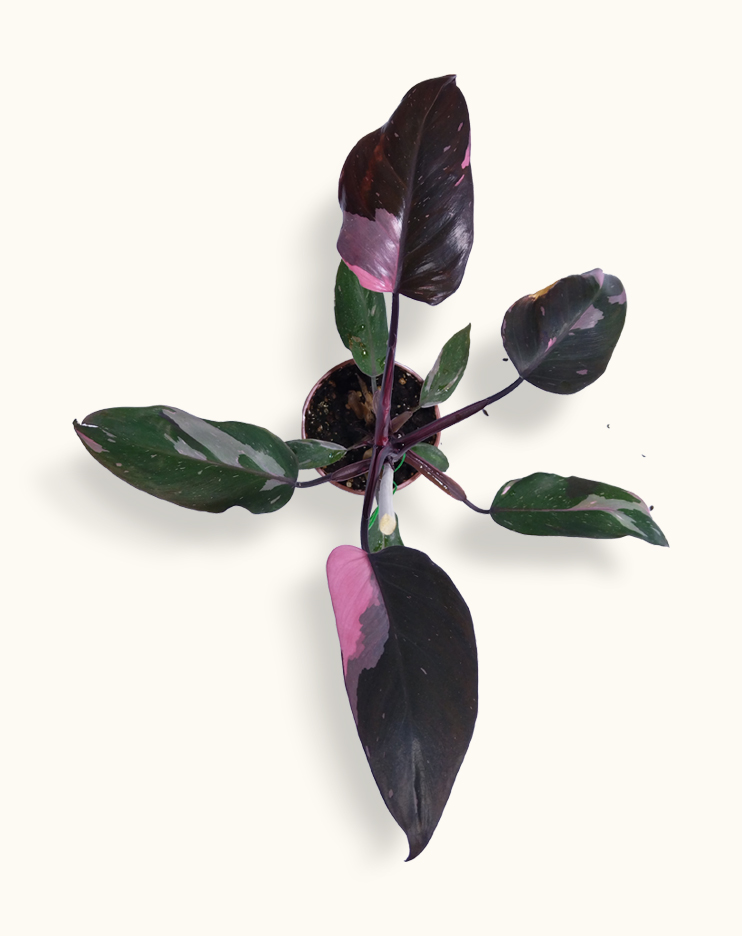





Little jewel of each collector, Philodendron Pink Princess has covered our Instagram feed since several years now. The pink variegations on its dark leaves or a true excitement to watch at each new growth !
 Can handle moderate brightness
Can handle moderate brightness
 High need in humidity
High need in humidity
 Adolescent
Adolescent
 Killing it would be remarkable
Killing it would be remarkable
DESCRIPTION
Origin : Philodendron Erubescens (its original variety) comes from South-American rainforests.
Personality : Killing it would be a master move.
Earmark : Dark green leaves with pink variegations.
Say something smart : Nobody is able to precisely state where the Pink Princess stems from. Last resources point to an unintentional cross between 2 other Philodendrons, in 1970 in Florida. A (very) happy surprise.
CARE
Which container?
A planter usually looks nice, but we recommend not to plant your new baby directly in one.
Leave it in its current pot until Spring, then ideally transfer it into a terracota pot with little drain holes when it looks cramped.
Finding its place
Brightness : Good level of brightness, as close as possible from a window but no direct sun.
Avoid letting it feel draughts near the windows and take it away from heating sources.
Humidity : 60 % or more.
Tip : Spray its leaves with water (ideally rain-water) once a week.
Tip 2 : Place some wet clay pebbles under the pot, so they keep diffusing humidity.
Temperature : Min : 15°C | Max : 30°C | Ideal : 20-22°C
Day-to-day care
Watering (purely indicative, depends on your local environment): once a week in Spring/Summer, and once every 10 days in Autumn and Winter.
Tip : Put your knuckle in the ground. If it feels totally dry, add some water to keep the soil wet (but not soaking it).
Fertilizer : Once every other week, from April to October
Taking care of the variegations: as a reason for us to adopt them, we wish for our variegated plants to be as pink as possible. A maximum brightness is key in succeeding with it. However, a fully white pink is not going to help with photosynthesis, making them more fragile. To keep a healthy balance, make sure to sometimes cut these, so the whole plant doesn't go south.